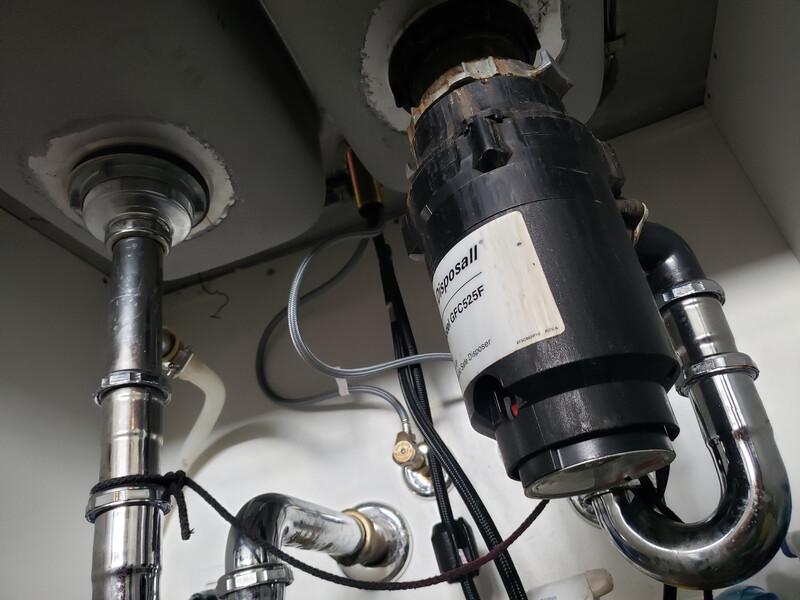They are making a few good points regarding Why Is My Garbage Disposal Leaking From the Bottom? as a whole in the content further down.

Garbage disposals are important kitchen area appliances that assist in dealing with food waste successfully. Nonetheless, a leaking waste disposal unit can be an aggravating and messy problem to manage. Fortunately, several leakages can be dealt with quickly with a couple of easy steps. In this post, we will certainly go over exactly how to take care of a leaking waste disposal unit efficiently.
Introduction
Waste disposal unit are set up under kitchen area sinks and are designed to shred food waste into smaller sized items, enabling it to pass through the pipes system easily. While these tools are normally trustworthy, leakages can take place in time because of deterioration, loose connections, or damages to the device.
Usual Sources Of Leaks in Rubbish Disposals
Worn Seals and Gaskets
Seals and gaskets play an important duty in avoiding water from dripping out of the waste disposal unit. Over time, these components can weaken, causing leakages around the disposal unit.
Loose Connections
The connections in between the garbage disposal and the plumbing system can end up being loosened over time, triggering water to leak out during operation.
Fractures or Holes in the Disposal Unit
Physical damages to the garbage disposal, such as cracks or holes in the housing, can likewise result in leakages.
Identifying the Resource of the Leak
Prior to trying to take care of a leaking waste disposal unit, it is important to identify the resource of the leakage. This can normally be done via aesthetic inspection or by carrying out simple tests.
Visual Inspection
Inspect the waste disposal unit device carefully for any type of indications of water leak. Pay very close attention to locations around seals, gaskets, and link points.
Examining for Leaks
One method to evaluate for leakages is by running water via the disposal unit and checking for any kind of visible indicators of leakage.
Devices and Materials Needed for Taking Care Of a Leaking Garbage Disposal
Before starting the repair service process, gather the required devices and products, consisting of a screwdriver, flexible wrench, plumbing's putty, replacement seals or gaskets, and epoxy or patching material for repairing cracks or holes.
Step-by-Step Overview to Repairing a Dripping Waste Disposal Unit
Turn Off the Power
Before attempting any kind of repair services, guarantee that the power to the garbage disposal unit is switched off to stop the risk of electric shock.
Find the Leak
Recognize the specific area of the leak and figure out the cause.
Tighten Connections
Make use of a wrench to tighten up any kind of loosened links between the disposal device and the plumbing system.
Change Seals or Gaskets
If the leakage is due to used seals or gaskets, eliminate the old components and change them with new ones.
Patching Cracks or Openings
For fractures or openings in the disposal system, usage epoxy or an appropriate patching product to seal the broken area.
Checking the Garbage Disposal After Repair Service
Once the repair service is complete, check the garbage disposal by running water via it to ensure that the leakage has been solved.
Preventive Upkeep Tips to Prevent Future Leakages
To avoid future leaks, it is essential to do normal upkeep on your waste disposal unit. This includes keeping it tidy, preventing placing non-food things or tough items down the disposal, and regularly checking for leaks or other problems.
Verdict
To conclude, dealing with a dripping waste disposal unit is a relatively simple procedure that can be finished with standard devices and materials. By following the steps detailed in this post and exercising preventive maintenance, you can keep your garbage disposal in good working condition and avoid costly repair work in the future.
HERE’S HOW TO FIX YOUR GARBAGE DISPOSAL
WHAT TO DO IF SOMETHING IS STUCK IN YOUR GARBAGE DISPOSAL
If the impeller won’t turn, there’s probably something stuck in the disposal. It could be a steak bone or peach pit, although plumbers report pulling all sorts of inappropriate objects out of disposals, such as bottle caps or aluminum foil. Make sure power to the disposal is off, and look inside to see if you can see the source of the jam.
Never stick your fingers in a disposal. Pull out anything you see with tongs or pliers.
If the disposal still won’t work, it may be time to call a plumber or consider buying a new disposal. GEM Plumbing & Heating is here for all of your garbage disposal needs.
WHAT TO DO IF YOUR GARBAGE DISPOSAL DRAIN IS CLOGGED
Take everything out from underneath your sink and put a bucket or other container under your disposal to catch any water that drains out. Disconnect your disposal from the power supply. If it’s plugged into a wall outlet, unplug it. If it’s hardwired into an electrical box, go to the electrical panel and turn off the breaker for the disposal. Pour ¼ cup of baking soda into the drain, followed by ½ cup of white vinegar. Give the solution a few minutes to fizz and do its work. Look into the disposal with a flashlight to see if you can see an object that might be causing the clog. If you see it, remove it using tongs or pliers. MORE TIPS ON DEALING WITH A CLOGGED GARBAGE DISPOSAL
Never use drain cleaner in a garbage disposal. It can damage the plastic parts inside the disposal. You can also be splashed with the caustic liquid while working to clear the clog. Beware! Never stick your fingers into a garbage disposal. Trust us — not a good idea. In many instances, your dishwasher drains through your garbage disposal. This allows the disposal to grind any large food particles that may be drained out of your dishwasher. There are some jurisdictions, however, where the plumbing code prohibits such a connection. WHAT TO DO WHEN YOUR DISHWASHER DRAINS THROUGH THE DISPOSAL
Run some water in the sink so your plunger has at least a ½-inch of water to create a seal and plunge vigorously up and down several times. You may need to repeat this several times. Run hot water down the drain to clear any residue that remains.

We hope you enjoyed reading our part about Why Is . Many thanks for taking a few minutes to browse our content. Feel free to set aside a second to share this blog post if you enjoyed reading it. We recognize the value of reading our article about The Handy Guide To Fixing Your Garbage Disposal Leaking.
Book An Estimate Now